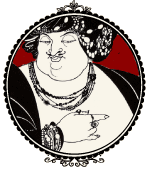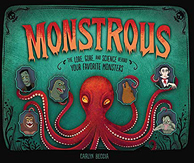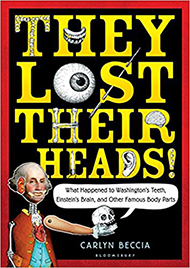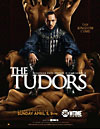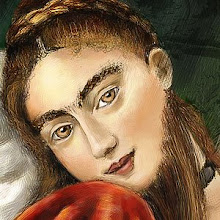 Congratulations to Kary...Winner of the Royal Affairs wigged out giveaway. Only two people got the question right. So here was my very scientific process for choosing a winner - I asked my husband to pick a number between 1 and 2. He picked 2. voila. my winner. The winner just needs to email me your mailing address - info@CarlynBeccia.com
Congratulations to Kary...Winner of the Royal Affairs wigged out giveaway. Only two people got the question right. So here was my very scientific process for choosing a winner - I asked my husband to pick a number between 1 and 2. He picked 2. voila. my winner. The winner just needs to email me your mailing address - info@CarlynBeccia.comAnswer: All wore wigs...except George Washington
1. Marguerite de Valois was born with the Medici dark hair in an era when women went to great lengths to dye their hair blond. Marguerite’s blond wig became so vital to her beauty regime that she only employed blond page boys. The boys would grow their hair long and then cut their hair to be donated to the queen’s coiffure.
2. Towards the end of her reign, Elizabeth I wore wigs to disguise her thinning hair. She owned more than 80 wigs including some blond wigs.
3. Mary Queen of Scots wore an auburn wig. If you got this one wrong, don’t feel bad. Most people living in the 16th century did not know she wore a wig until her executioner was left holding on to her wig instead of her head.
4. Louis XIII wore wigs, called perruques, in his early twenties to cover up his prematurely thinning hair. Out of respect, his courtiers followed suit and the age of wig wearing aristocrats became the norm.
5. In Louis XIV’s early reign he was very proud of his thick, dark mane. Unfortunately, he began to lose his hair later in his reign. He employed 40 wig makers at the court of Versailles during the golden age of wig wearing.
6. Charles II was blessed with great rocker hair and proudly displayed his long, dark locks in the big headed styles of the time. But later when his hair began to thin, he also succumbed to the wig wearing cognoscenti. Charles was even rumored to have had a wig made from the pubic hair of his mistresses.
7. Marie Antoinette preferred her towering hair dos to be created with her own hair. Unfortunately, she began to lose her hair after child birth and was forced to substitute false hair.

8. George III started his reign au natural with his own hair pulled back in a queue (Shown above. Tied back in a pony tail with a ribbon). The wig makers feared that the king’s choice to wear his own locks would put them out of business if others were to copy the king’s example. In response to this fear, they petitioned the king to insist all gentlemen be properly wigged. The petition was viewed as so ludicrous that the guild of wooden leg makers petitioned the king to insist everyone wear a wooden leg.
Later in life, George sported a brown wig that became known as the ‘brown George.’

9. It was probably unfair of me to include George Washington. First, no one's hair should do that naturally (although he did powder it). Second, he certainly was not royalty....which is why he would have never worn a wig. He vociferously supported the ideals of the French Revolution, and preferring to keep his head, was very careful not to copy the styles of headless kings and queens in an age when Americans wanted nothing to do with a monarchy. So like George III, he also wore his own hair in a queue. Poor George probably had enough problems trying to keep his fake teeth in his mouth without the hassles of wearing a wig.
Wigs/false hair are definitely back in vogue today. I am pretty certain that half of Hollywood is wearing fake hair and its only a matter of time before we see kids asking for hair extensions for Christmas. (Don't I sound like one of those crotchety, old bitties that doesn't understand fashion trends? Don't answer that.)
Everyone have a Happy Thanksgiving and wear those hair pieces with pride!
Sources and Further Reading:
Images from the Lewis Walpole Library
Sherrow, Victoria. The Encyclopedia of Hair: A Cultural History,Westport, Conn. : Greenwood Press, 2006.
Bryer, Robin. The history of hair : fashion and fantasy down the ages, London : Philip Wilson ; Wappinger Falls, N.Y. : Distributed in the USA and Canada by Antique Collectors' Club, 2000.
Corson, Richard. Fashions in Hair, London : P. Owen, 1980.

